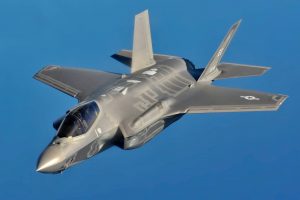Israel killed Ismail Haniyeh, prompting Iran to threaten retaliation. Rumors of a ceasefire deal led to conflicts escalating.
**
Summary: Israel killed Hamas’ Ismail Haniyeh in Tehran, causing Iran to threaten retaliation, which did not materialize. Rumors suggested a secret Iran-West ceasefire deal for Gaza, which was not upheld. Following this, Israel targeted Hezbollah in Lebanon, leading to significant casualties. Iran retaliated on October 1 with hypersonic missiles, causing major damage in Israel. Now, attention is on Israel’s response, with differences emerging over target choices. The U. S. deploys defense systems in anticipation of Iran’s next move. Decisions on striking Iran’s nuclear facilities could escalate tensions further. Israel’s actions in Gaza and implications for the region remain a concern. The dilemma lies in Israel’s response and potential consequences in a volatile regional landscape.
On July 31, Israel killed Ismail Haniyeh, the head of Hamas’ political bureau, in Tehran. Iran swiftly announced that it would retaliate at the highest level. But to the world’s surprise, no retaliation came. Instead, rumors surfaced that Iran had struck a secret bargain with the West, agreeing to refrain from retaliation in exchange for a ceasefire in Gaza. However, as has often been the case, the West did not keep its promise. Israel continued its assault on Gaza, and Iran was left deceived.
Following Gaza, Israel shifted its focus to Lebanon, assassinating key Hezbollah commanders. The situation escalated when, on September 27, Israel launched a devastating airstrike on Hezbollah’s supposed headquarters in Beirut’s Dahiye district, killing Hezbollah Secretary General Hassan Nasrallah and Quds Force Deputy Commander Brigadier General Abbas Nilforoushan. Further compounding the loss, another airstrike took the life of Hashim Sayyid-Doun, Nasrallah’s likely successor.
Iran’s strategic patience finally snapped. On October 1, it launched a massive retaliation, deploying Fettah hypersonic ballistic missiles in a strike that inflicted significant casualties on Israel for the first time. Around 200 missiles, largely undetected by Israel’s Iron Dome defense system, targeted key locations, including the Nevatim Base, Tel Nof, and Mossad headquarters in Tel Aviv.
This attack marked a significant shift, as Iran directly hit Israel for only the second time, but this time, it caused real damage. The attack, aimed at avenging Haniyeh, Nasrallah, and Nilforoushan, was a major blow to Israel’s sense of security.
Israel’s Dilemma: Striking Back or Strategic Patience?
In the wake of these events, the entire world is now focused on how Israel will respond. While Israeli leadership has made it clear that a retaliation is inevitable, there seems to be a disagreement with the U.S. over the choice of target. The U.S. has reportedly urged Israel to avoid hitting Iran’s nuclear and oil facilities, fearing broader regional destabilization. However, Israeli officials, alarmed by Iran’s proximity to nuclear capability, argue that Iran’s nuclear infrastructure must be neutralized.
For Israel, the stakes are existential. While Israel is widely considered to be the only nuclear power in the region, Iran is racing to develop its own nuclear arsenal, aiming to challenge this dominance. For Israel, preventing Iran from acquiring nuclear weapons is paramount, and it may act with or without U.S. approval.
The tension between Israel and Iran mirrors the dynamics of Israel’s 1981 strike on Iraq’s Osirak Nuclear Facility, an attack that eliminated Iraq’s potential to develop nuclear weapons. But today, the situation is more complex, with Iran’s missile capabilities proving formidable, as shown by its successful attack on October 1.
U.S. Moves and Political Calculations
In response to the growing threat, the U.S. has deployed THAAD high-altitude air defense systems to Israel, signaling preparations for Iran’s next move. The inadequacy of Israel’s defense systems during Iran’s hypersonic missile strike revealed the need for additional protection. Still, Israel’s reliance on U.S. support is becoming more apparent, despite Israeli Prime Minister Benjamin Netanyahu’s tough rhetoric on the international stage.
The U.S. may be forced into a delicate balancing act, especially as the 2024 elections approach. Former U.S. President Donald Trump has already voiced support for Israel’s call to strike Iran’s nuclear facilities, positioning himself as a hawkish figure against Iran. The Biden administration, meanwhile, is under pressure not to be seen as weak on Iran, especially in light of Trump’s strong stance.
Israel’s Struggle in Gaza and Its Broader Implications
Amid this complex geopolitical game, Israel’s brutal campaign in Gaza continues. While much of the world is focused on Lebanon and the possibility of a confrontation with Iran, the siege and bombardment of Gaza persist. Israel has struggled to meet its objectives in Gaza since the conflict erupted over a year ago, failing to neutralize Hamas leadership or secure the release of hostages.
The war has taken a toll on Israel, draining its resources and manpower. Even Israel’s vaunted Iron Dome system is showing signs of fatigue after a year of near-constant activation. Under these conditions, Israel faces a critical choice: either it accepts the limitations of its power and seeks a ceasefire or risks a broader war by striking Iran.
What’s Next for Israel and the Region?
The situation is reaching a critical juncture. If Israel chooses to strike Iran’s nuclear facilities, it could trigger a regional conflict involving Hezbollah, Iran, and potentially other regional actors. With its human and financial resources already stretched, Israel’s ability to wage a multi-front war is in serious doubt.
Ultimately, the world waits to see if Netanyahu will opt for restraint or risk dragging the Middle East into a catastrophic war. As Israel continues its operations in Gaza, the broader question remains: can Israel continue to rely on U.S. support indefinitely, or will it find itself facing insurmountable challenges in a rapidly shifting regional landscape?






